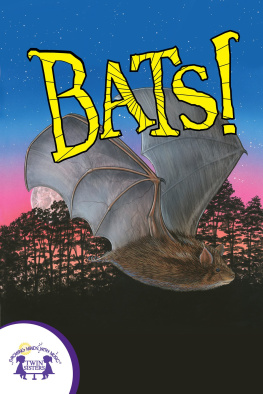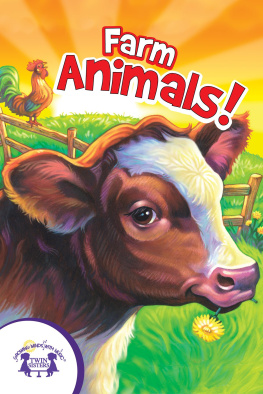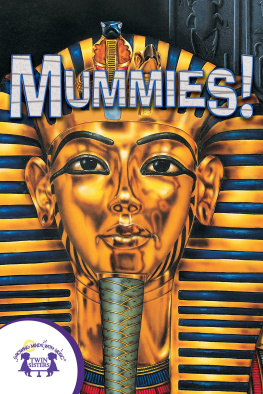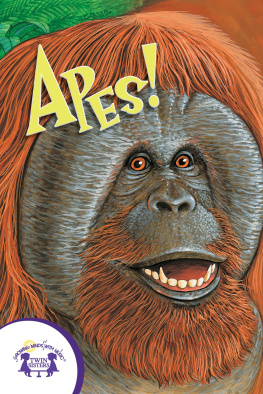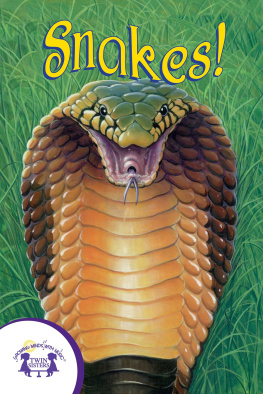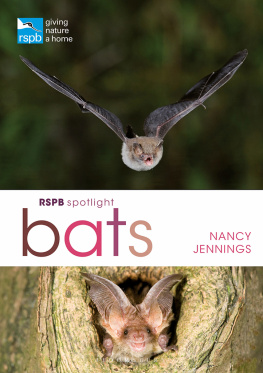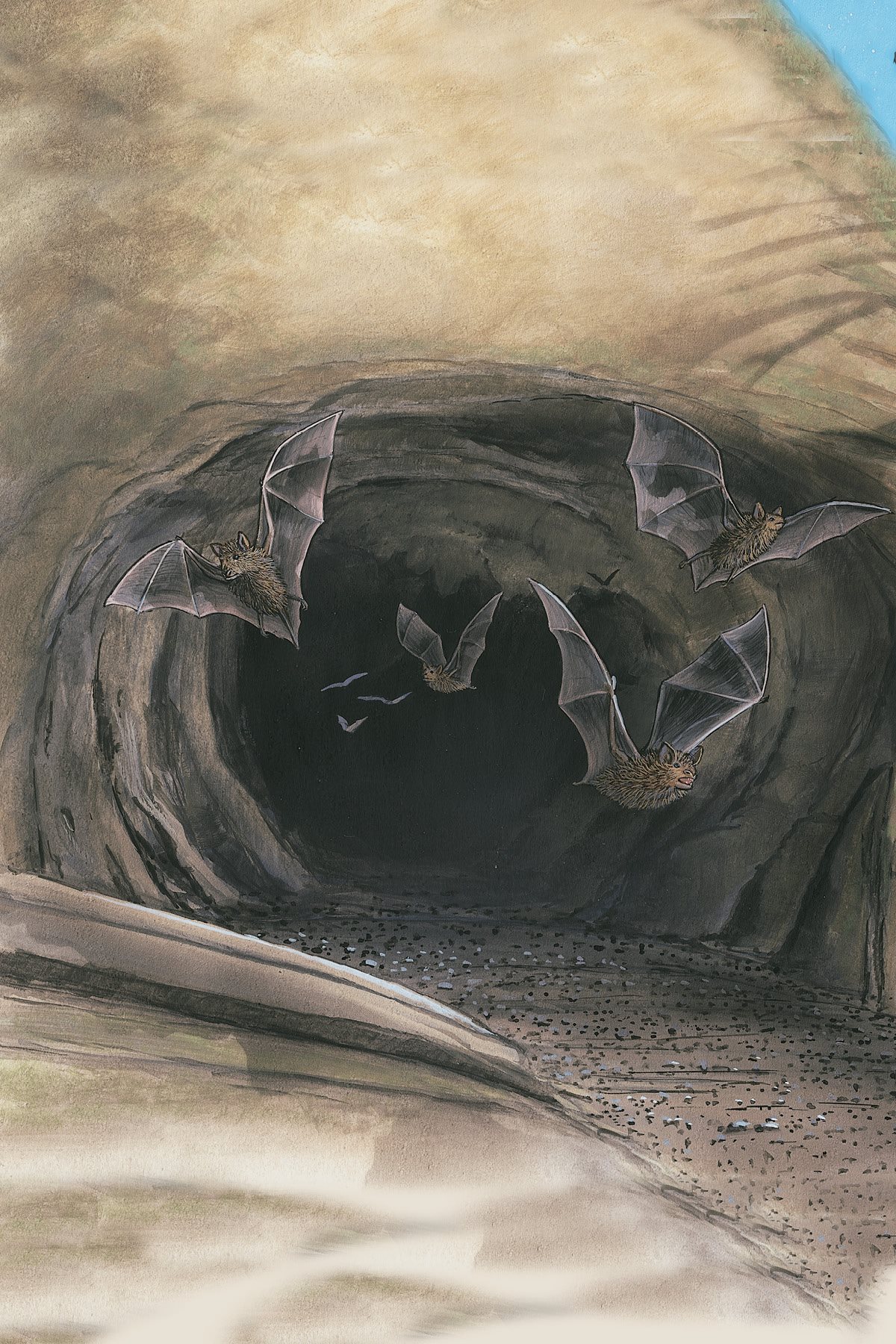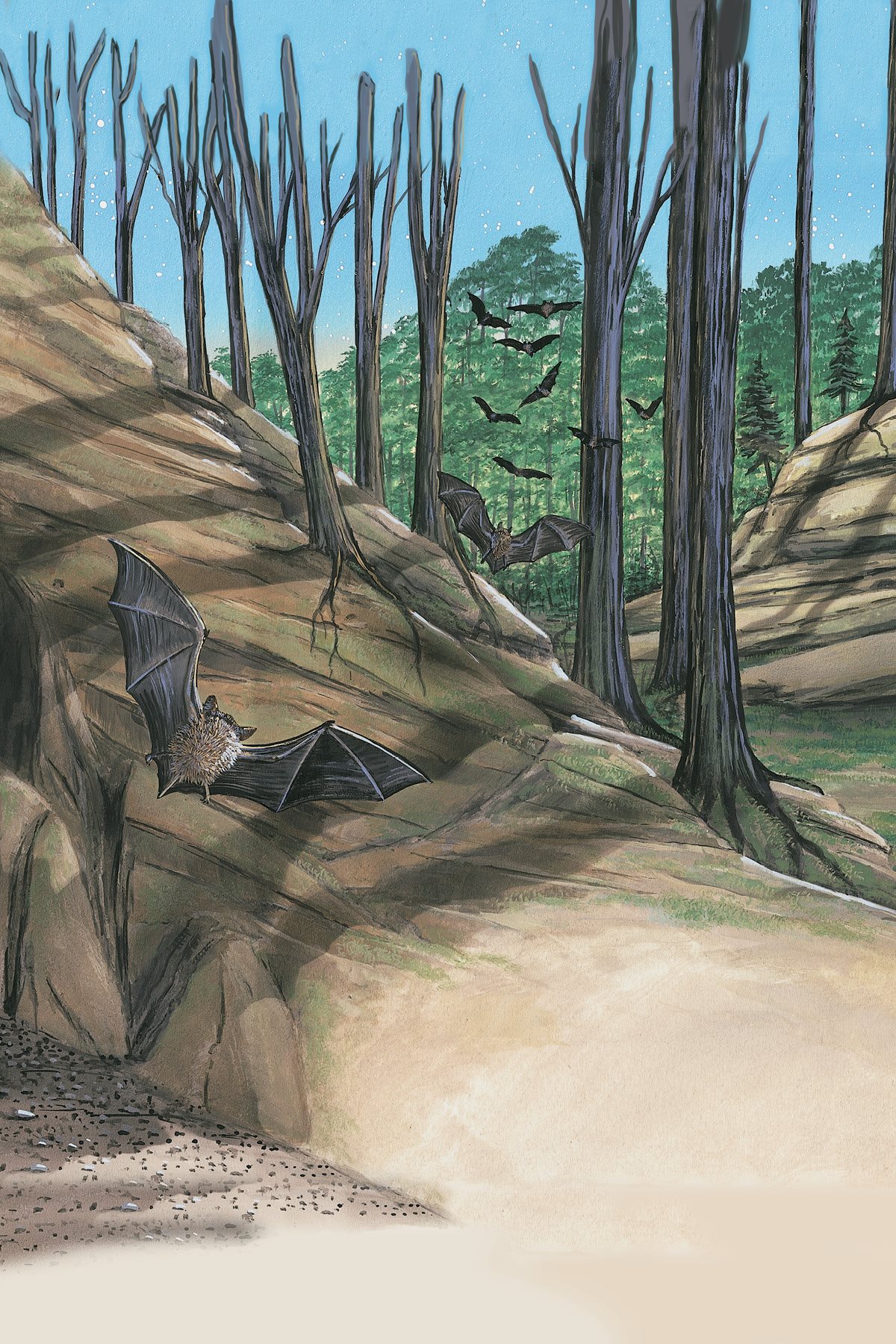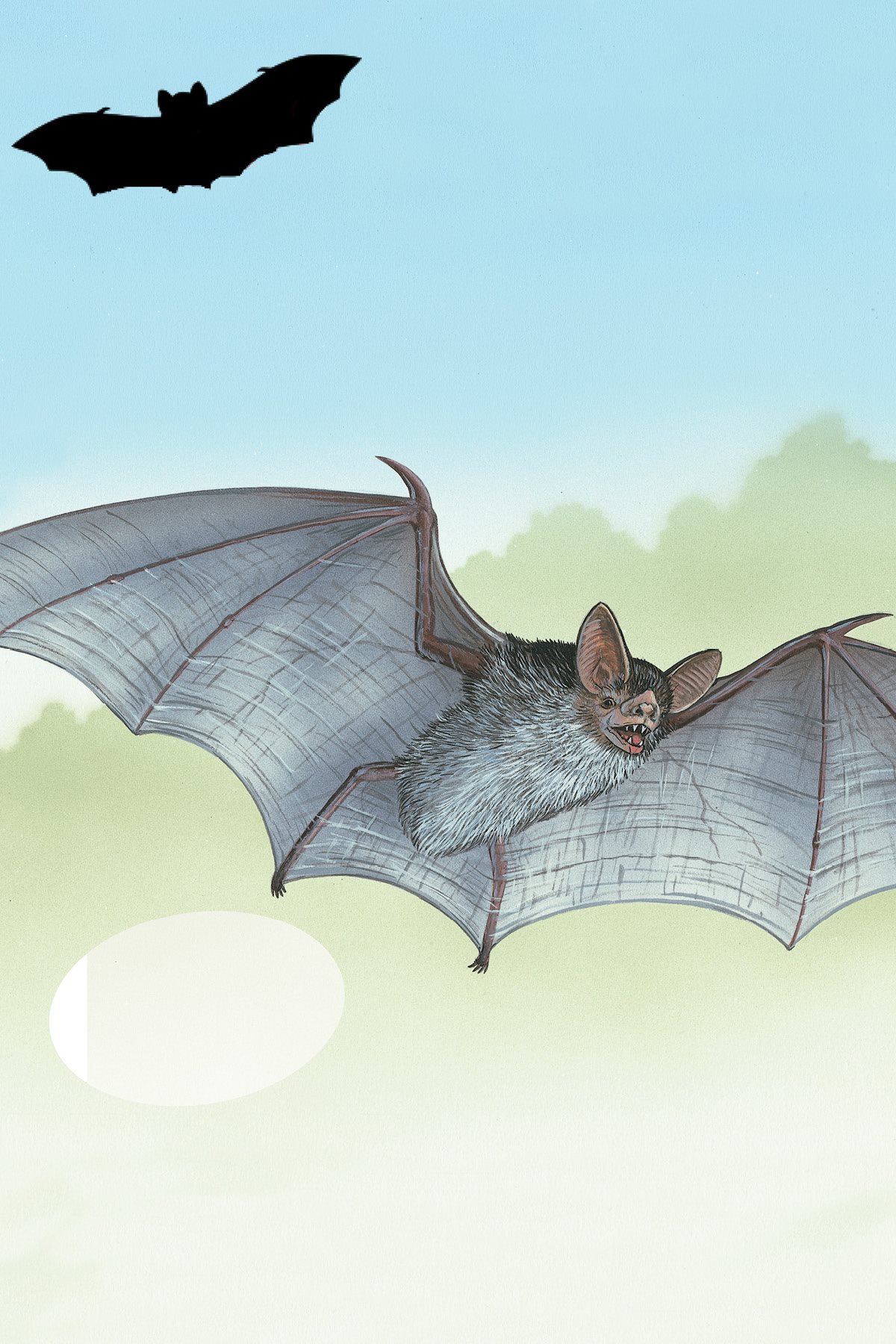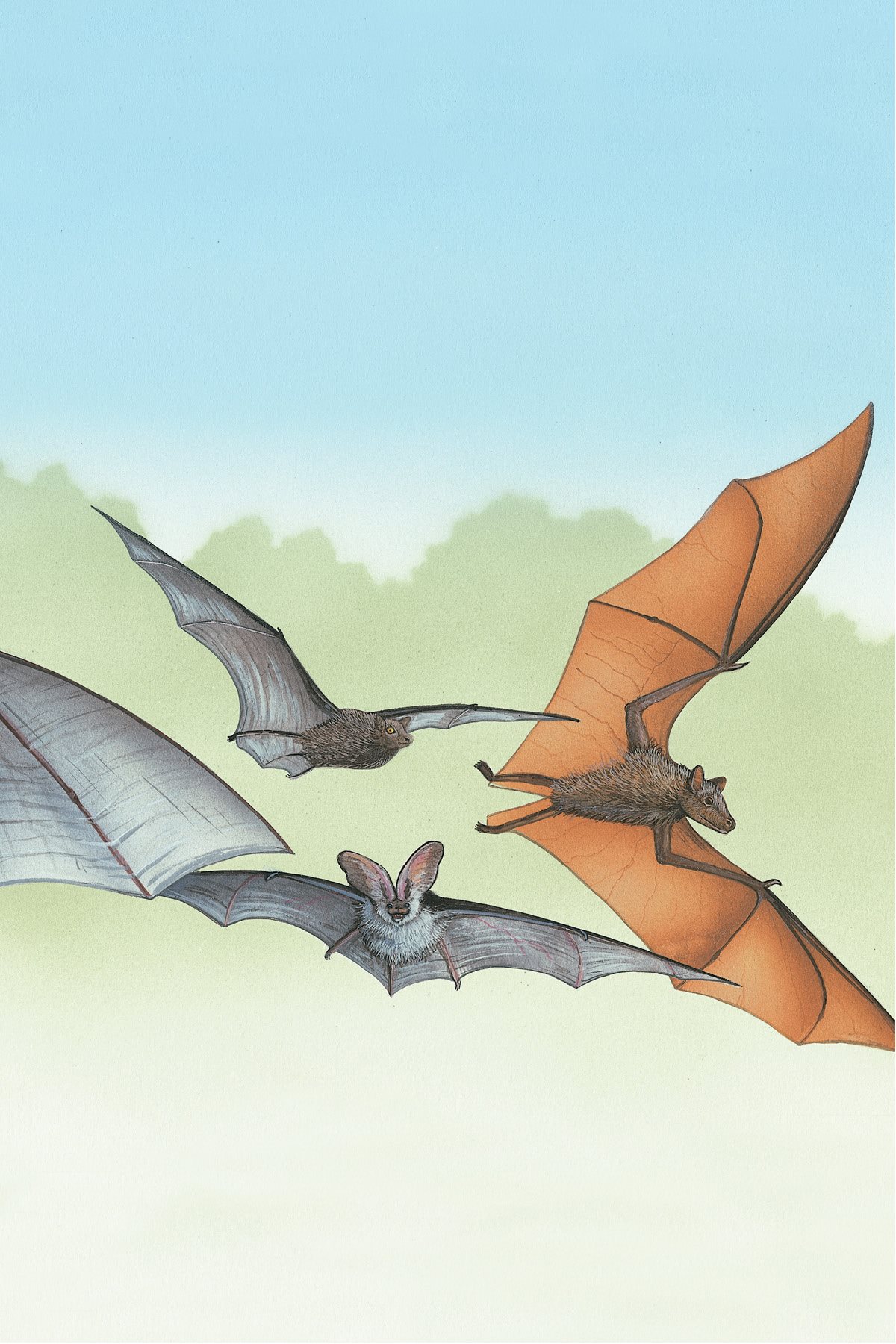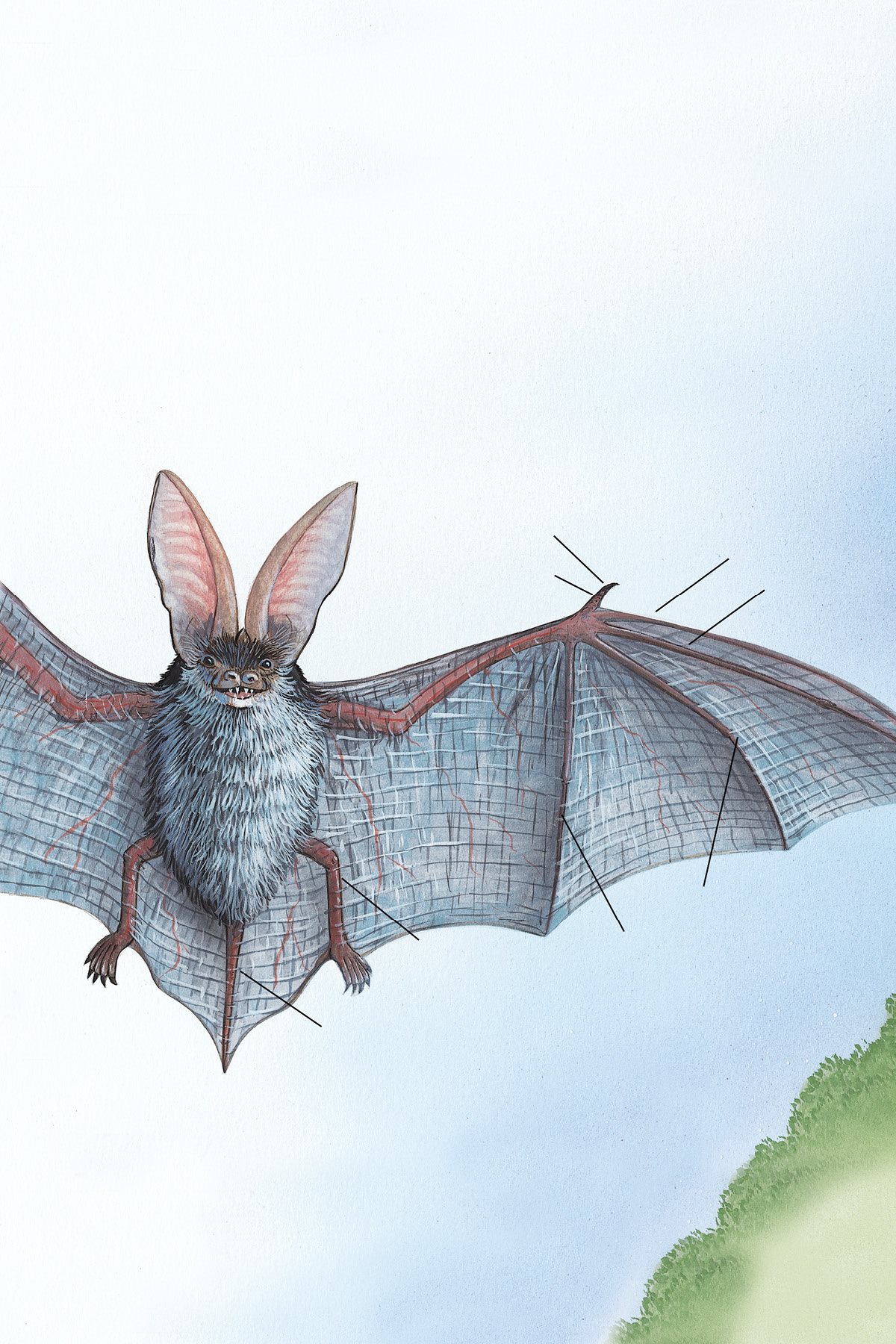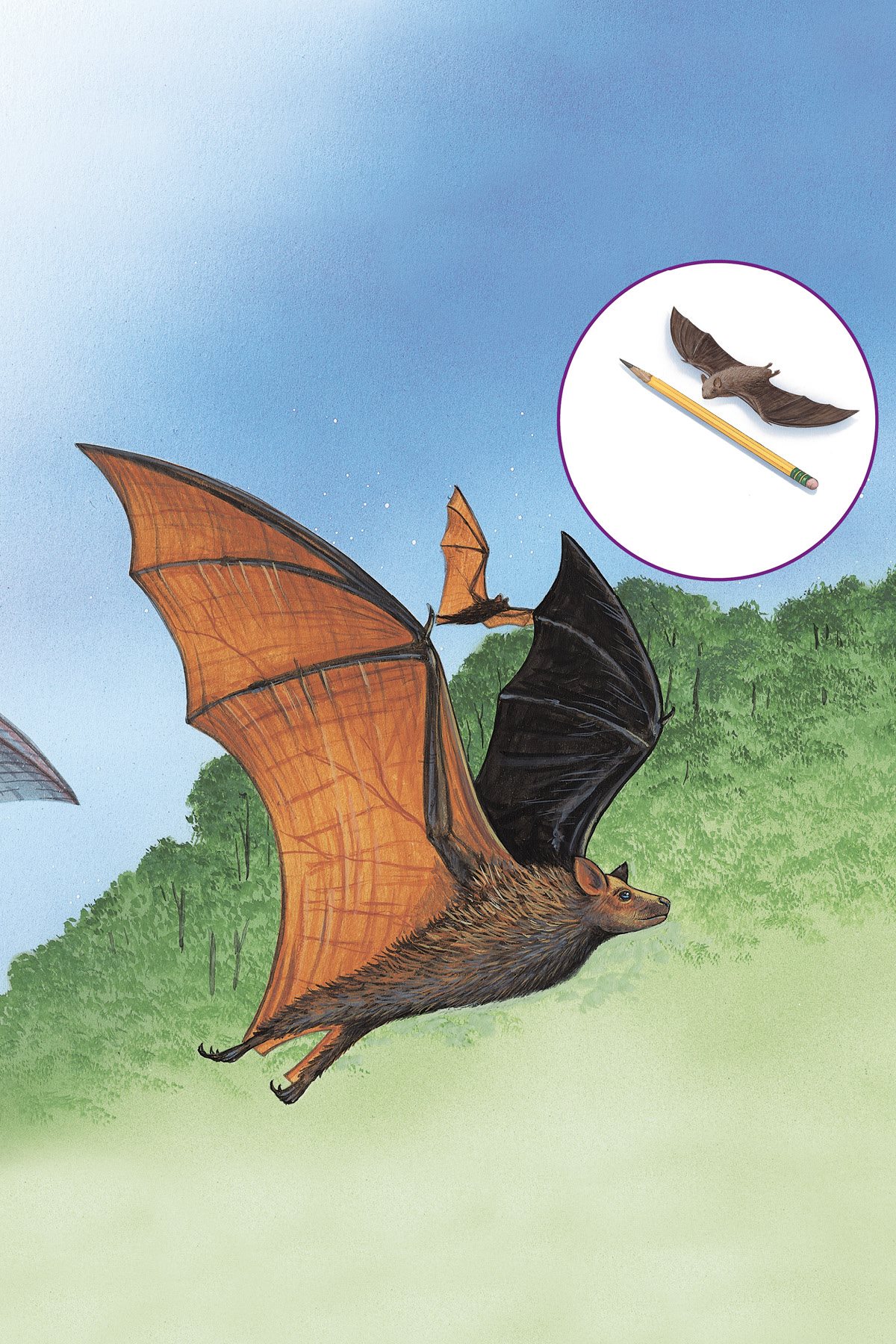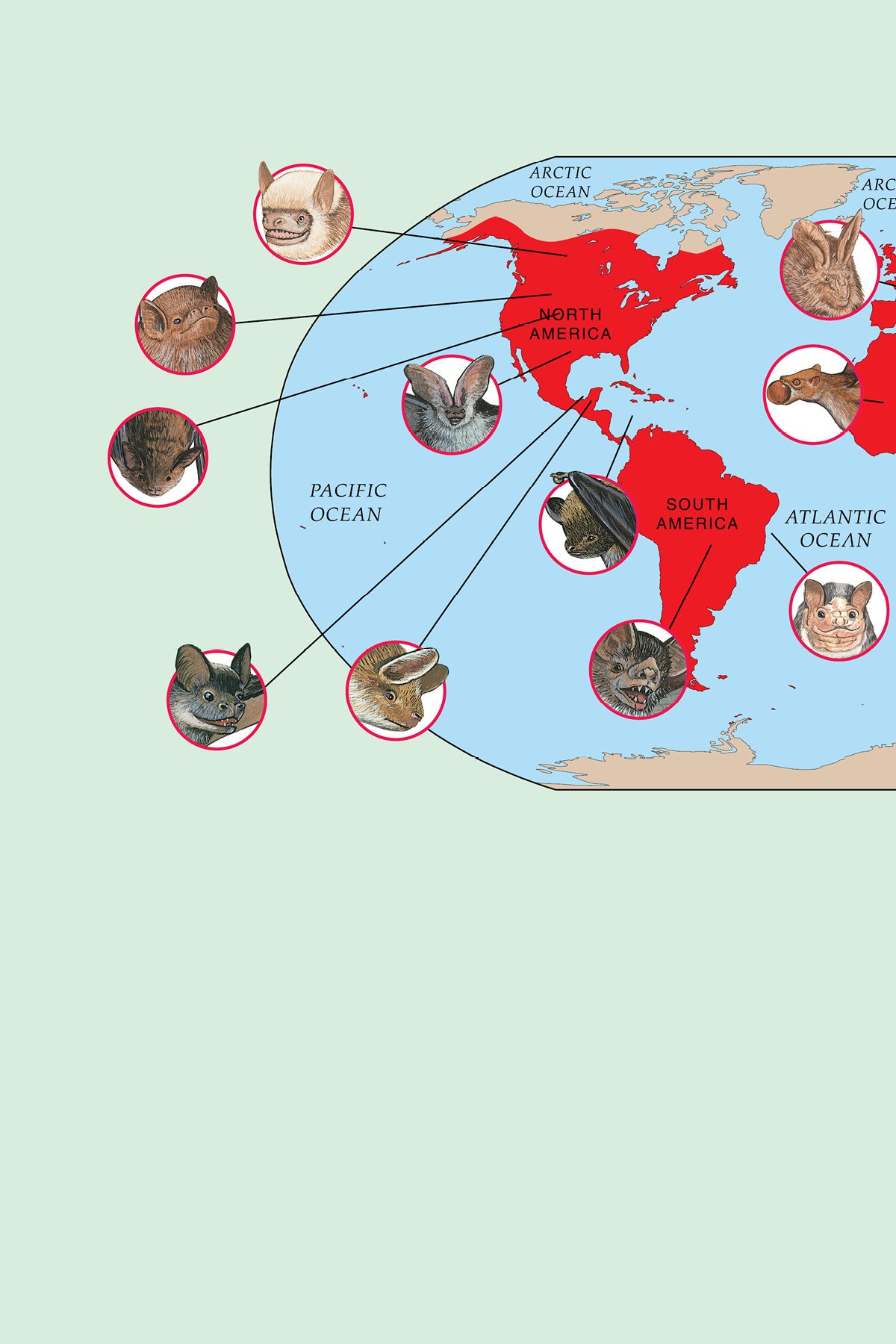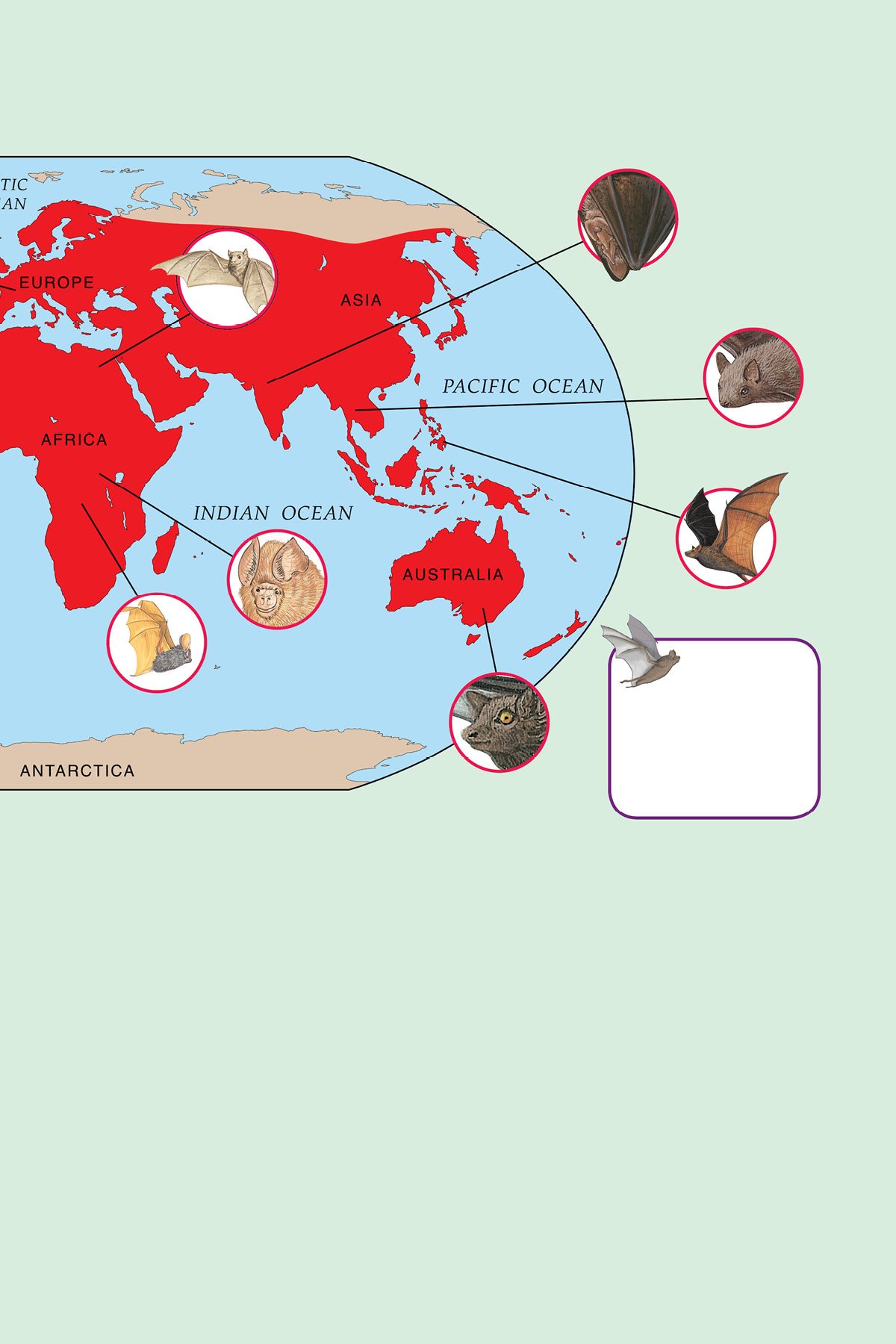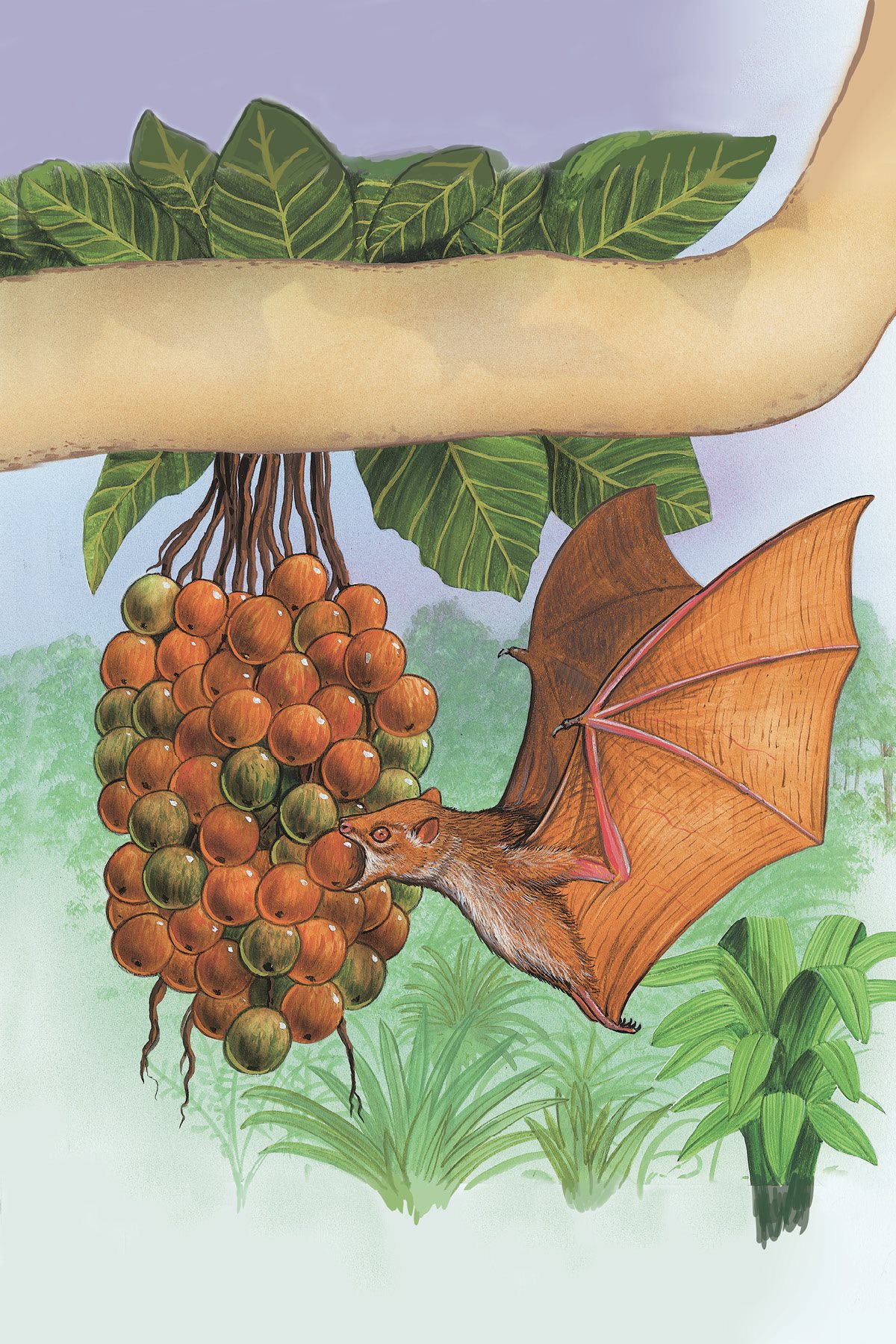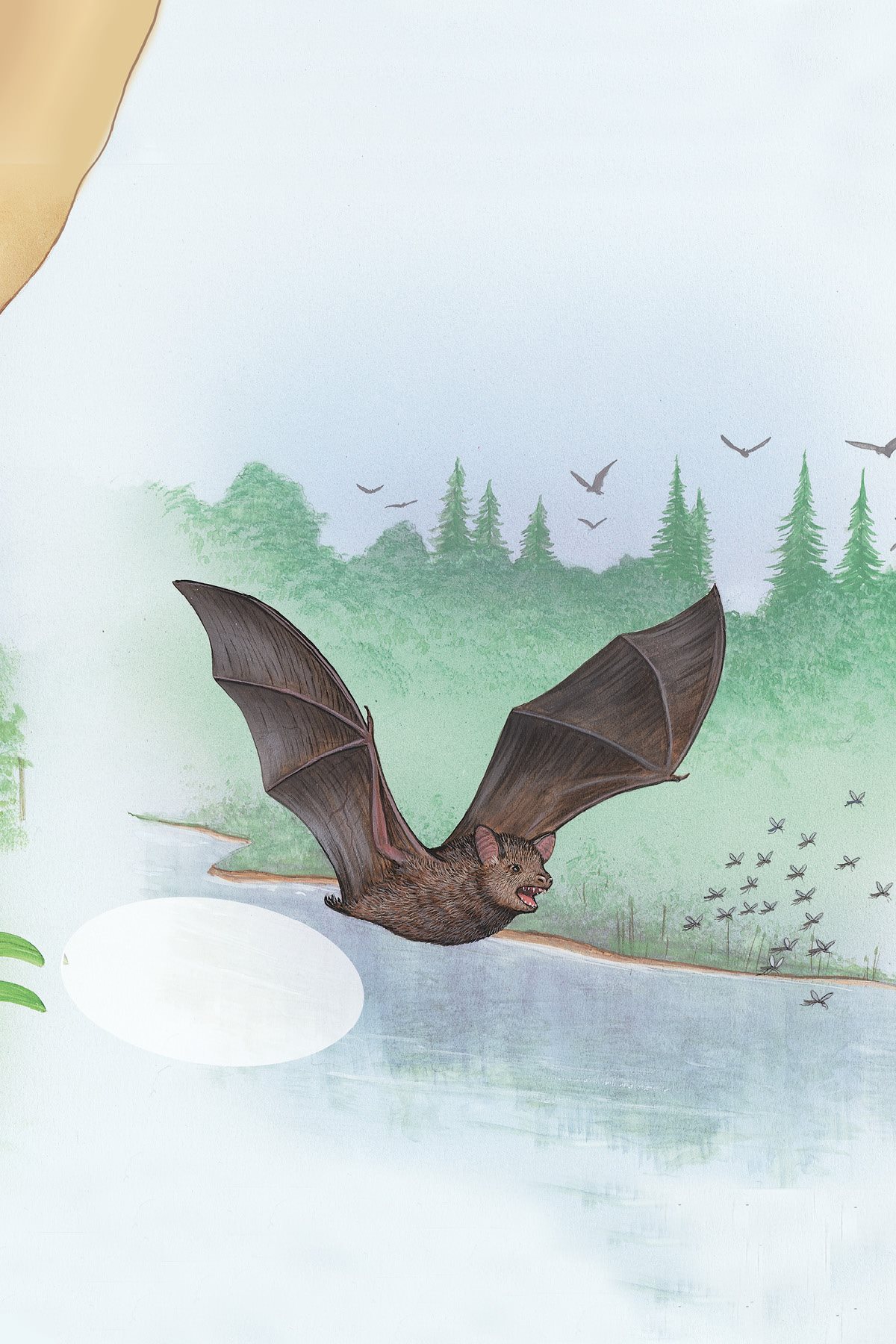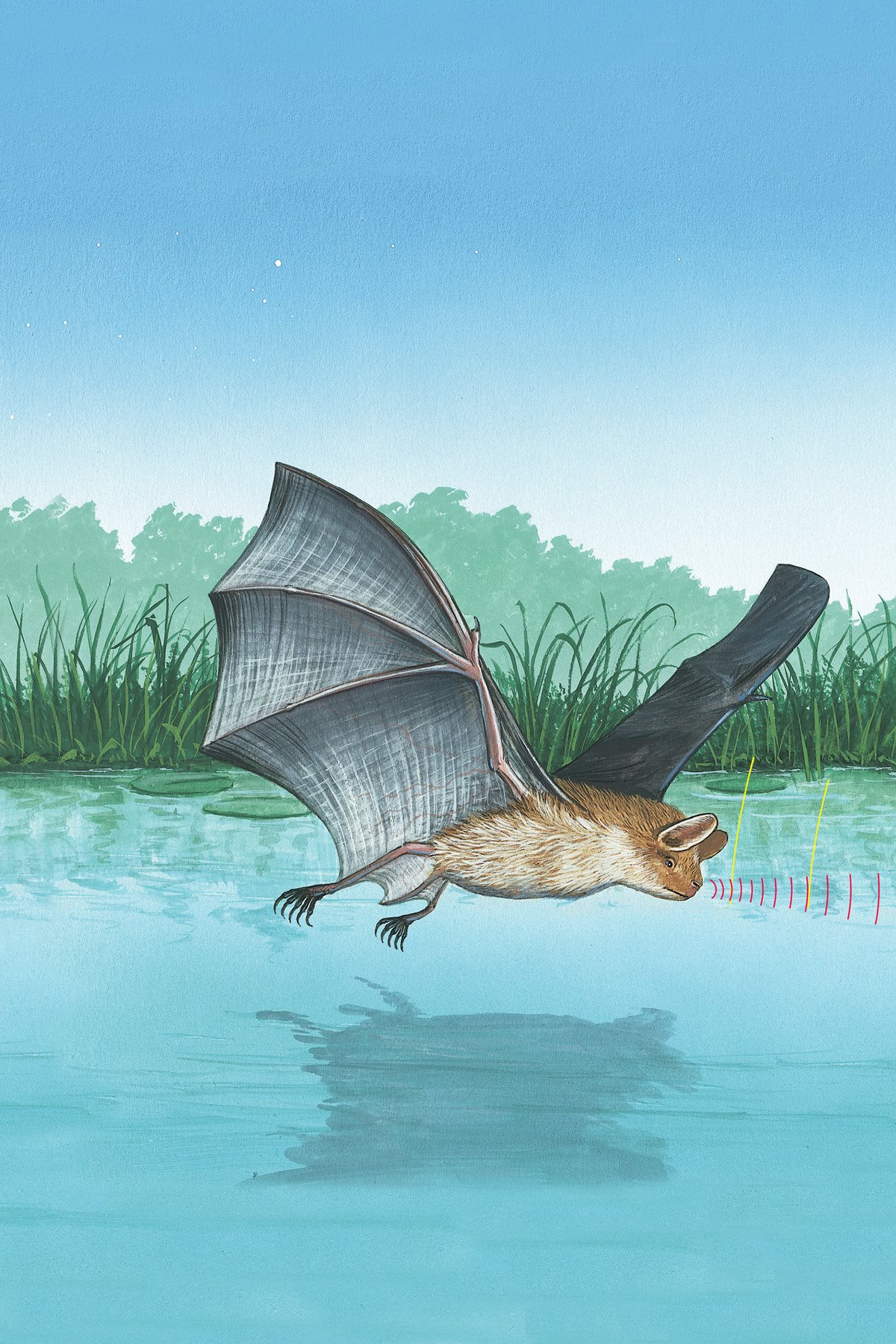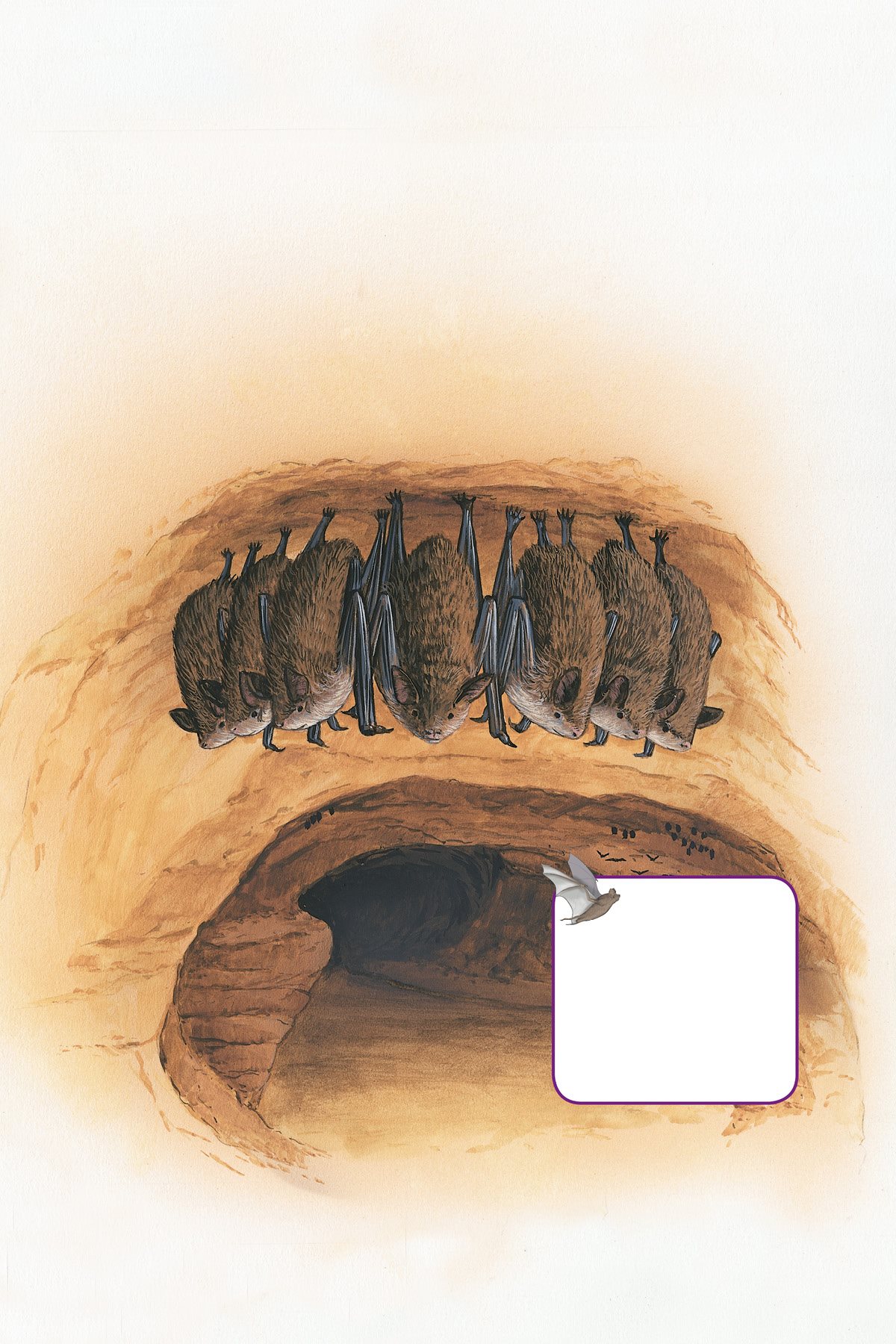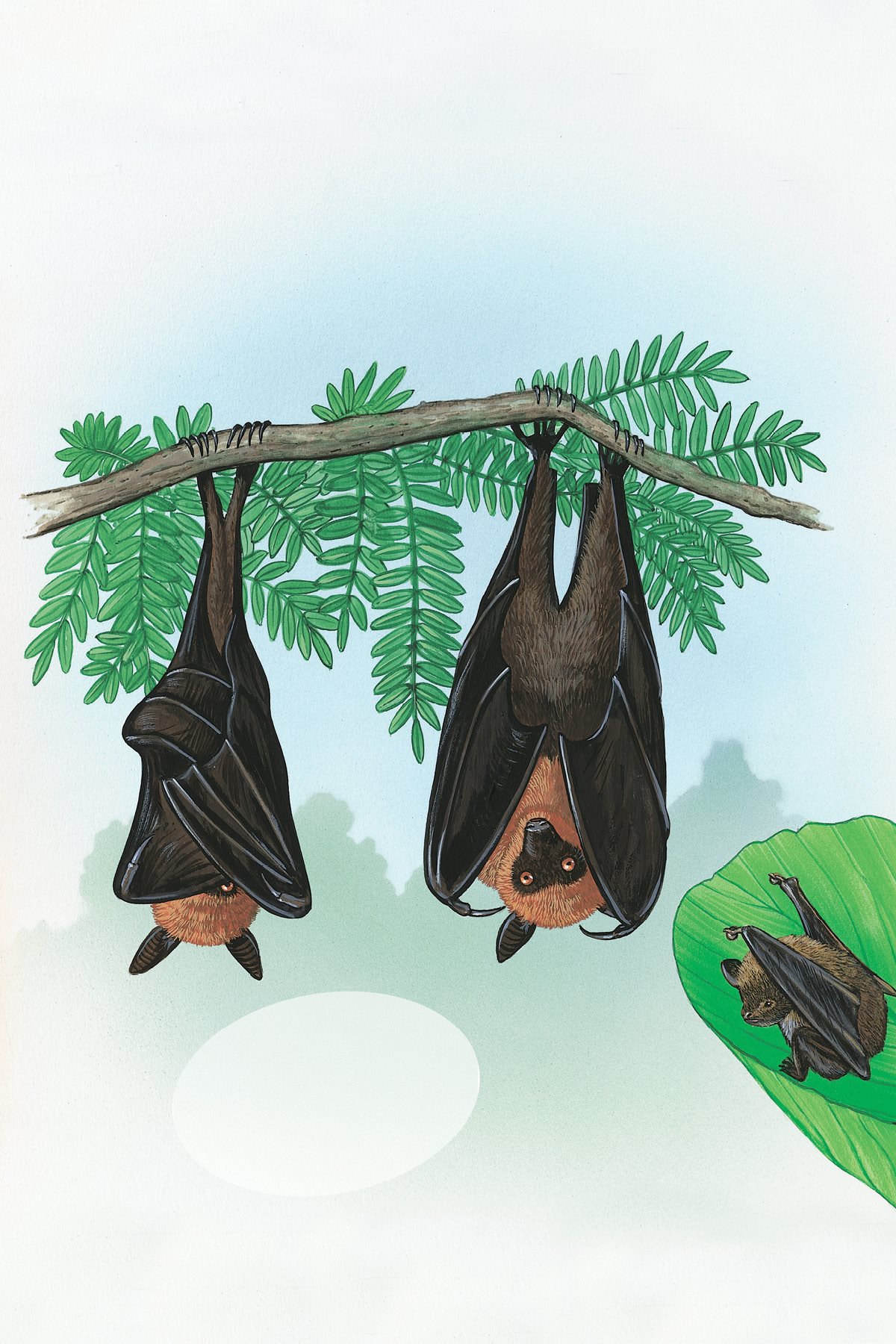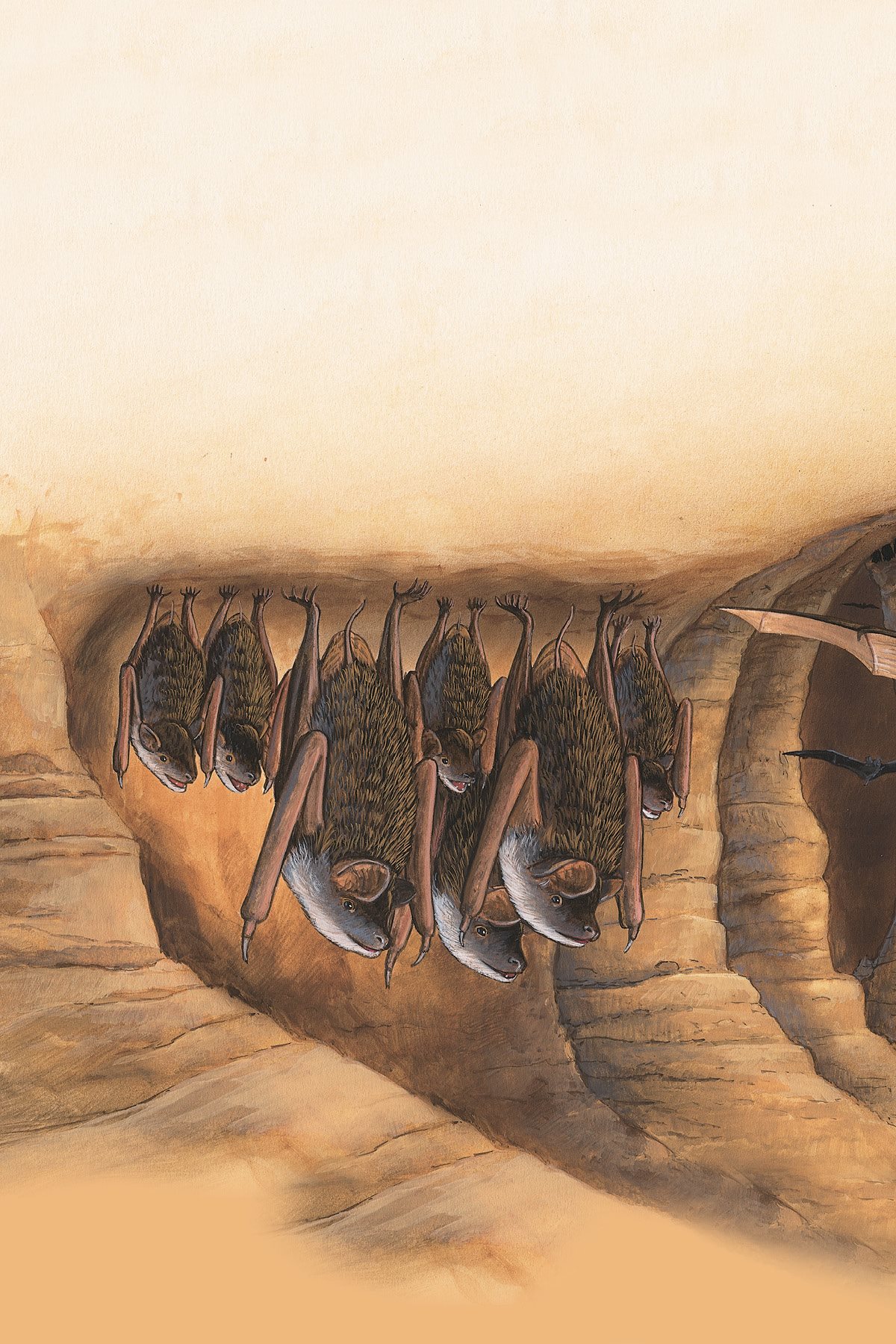In the dark of night they fly. By day, they sleep hanging upside down. And there are almost 1,000 different kinds of them.
What are they?
(Turn the page to find out...)
For centuries, people thought bats were evil creatures that drank blood and carried sickness. While a few kinds of bats do drink the blood of large animals such as cattle and can carry diseases such as rabies, bats rarely harm people.
Vampire Bat
Did you know that bats make up almost a quarter of all types of mammals in the world?
Answer:
BATS!
Like dogs and cats, bats belong to a group of animals called mammals. Like all mammal mothers, bat moms feed their babies milk.
Scientists divide bats into two main groups megabats and microbats. Megabats are usually larger than microbats, and they have better eyesight.
Tube - nosed Bat (mega)
Spectacled Flying Fox Bat (mega)
Spotted Bat (micro)
What is a bat?
The bat is the only kind of mammal that can fly. In fact, some bats can only fly they cannot walk! A bats wings are made of thin skin thats attached to its furry body and feet. Each wing includes five fingers, one of which is a claw. The bats feet also have toes with claws. All of these claws help the bat hold onto rocks and branches.
tail
leg
thumb
claw
fifth finger
second finger
third finger
fourth finger
From tip to tip, some kinds of bats, like Giant Flying Foxes, have a wingspan as wide as feet (2m). But there are also tiny bats, like Bumblebee Bats, with wingspans of only inches (15cm) smaller than the length of a new pencil. Bats may weigh less than a penny. Or they can weigh as much as 2.2 pounds (1kg) the weight of a - page book!
Did you know that the Bumblebee Bat is the smallest mammal in the world?
Giant Flying Fox
Bats live all over the world, except in places that are always cold. But no matter where they live, bats are nocturnal that means they move about and search for food mostly at night. During the day, they groom themselves, care for their young, and sleep.
Spotted Bat
Mexican Free - tailed Bat
Mexican Fishing Bat
Honduran Disc - winged Bat
Vampire Bat
Eastern Pipistrelle Bat
Slit - faced Bat
Gambian Fruit Bat
Wrinkle - faced Bat
Big Brown Bat
Little Brown Bat
Like many timid creatures, bats are colored to blend into their surroundings. Tropical bats that live in the jungle may be brightly colored. Bats that live in colder climates tend to be black, brown, or gray. One other interesting fact about bat bodies: they have very sharp little teeth
Facts
Flying mammals
Wings with claws
Range of body colors
Nocturnal
Small, sharp teeth
Wrinkle - faced Bat
Bumblebee Bat
Egyptian Fruit Bat
Horseshoe Bat
Giant Flying Fox
Yellow - winged Bat
Leaf - nosed Bat
Tube - nosed Bat
Megabats usually eat fruits and flower nectar. Such food is plentiful in the tropics of Africa and Asia where they live.
Gambian Fruit Bat
What do bats eat?
Microbats, on the other hand, feed mostly on insects, spiders, and scorpions. Many of these bats catch insects in their mouths or wings as they fly. A few microbats eat frogs, lizards, and fish. And vampire bats, with their razor sharp teeth, drink animal blood!
Brown Bat
A single brown bat can catch and eat 1200 mosquitoes in just one hour.
Megabats use their very sharp eyesight and a good sense of smell to find food. They even see well at night. The expression blind as a bat doesnt refer to megabats!
Mexican Fishing Bat
How do bats find food?
Most microbats dont have good eyesight. They use a process called echolocation to find meals. The microbat sends out a high - pitched sound through its mouth or nose so high that people cant even hear it. The sound bounces off nearby objects and comes back to the bat as echoes. From the echoes, the bat knows what the object is, where it is, and how fast it is moving!
Mexican fishing bats use echolocation to find a minnows fin that is only a fraction of an inch (1cm) above a ponds surface!
Similar kinds of bats live in groups called colonies. The place where the colony lives together is called a roost. Bats may use different roosts during the night to rest, to eat, and to find shelter.
Roosts
Dark caves
Hollow trees
Small crevices in rocks
Abandoned buildings
Tree branches
Any sheltered place with low light
Little Brown Bats
Where do bats live?
When sleeping in their roosts, bats hang upside down. The claws on their feet and wings help them hold on to cave ceilings, branches, and other high places.
Disc - winged Bat
Lyles Flying Foxes
In India, one kind of horseshoe bat shares the roost with large porcupines.
Ouch!

